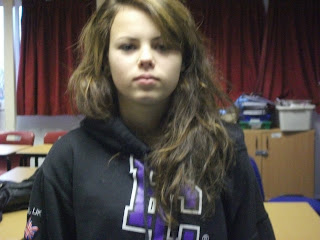This is my sixth form magazine I did a Front cover and a double page spread for my audience of students age 15-18 and thinking of joining a sixth form.
I choose the font because its clear but stylish to appeal to young people i choose to do a kind of shadow text to make it more appealing. i did a bit of text down the side to give a taster to the magazine i have seen this on other magazines i have reasearched.
i put a blue background to appeal to most genders, i tryed other colours like purple and green but i decided they leaned more towards one gender. Blue is a colour that is almost neutral between genders.
I took this picture of 2 sixth form students being smiley and happy to encourage people to come to sixth form because it's a happy environment. I did one main image like on other teen magazines i looked at. I feathered some smaller images in at the bottom of people working to have a quick glance of what is inside the magazine and also to have the students at work. I feathered it to make it more attractive to the younger audience.

For the double page spread i choose the same font and same shadowing on text to have a 'house style'. The green background is quite neutral and the green and purple text contrasts to stand out from the other black and white text to seperate the subjects.
I did a school based agony aunt with a mad professor. The 'fun facts' are funny and some celebrity based to appeal to the audience. This section of the magazine also allows audience interation.


 for the image, the image is in black and white as if his life is in black and white because of child abuse. He's looking straight towards the camera to connect with the audience. The text in this image is different because it's on his hand as if he is saying it and asking you for protection.
for the image, the image is in black and white as if his life is in black and white because of child abuse. He's looking straight towards the camera to connect with the audience. The text in this image is different because it's on his hand as if he is saying it and asking you for protection.













